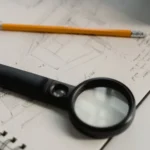Prior Art Search: Conducting a Prior Art Search to Identify Existing Patents That May Be Relevant to Your Invention
- Updated on: Jan 11, 2025
- Read 3 minutes
- Published on Jan 11, 2025
A prior art search is a process of searching for existing patents that may impact the novelty and uniqueness of an invention. This is important to determine the potential for obtaining a patent for the invention and to avoid infringement of existing patents. The search helps inventors understand the state of the art and determine the originality of their invention.
Welcome to our blog piece on the topic of conducting a prior art search to identify existing patents that may be relevant to your invention. In this post, we will explore what a prior art search is, why it is important, and how to conduct one.
What is a prior art search?
A prior art search is a process of researching and identifying existing patents, published patent applications, and other publicly available information that may be relevant to your invention. The goal of a prior art search is to identify any prior art that may impact the novelty, non-obviousness, or other patentability criteria of your invention.
Why is a prior art search important?
Conducting a prior art search is an important step in the patent application process because it helps you to understand the state of the art in your field of technology and to identify potential obstacles to obtaining a patent. A prior art search can help you to determine whether your invention is eligible for patent protection and to identify any potential issues that may need to be addressed in your patent application.
How to conduct a prior art search
There are several steps involved in conducting a prior art search:
- Define the scope of your search: The first step in conducting a prior art search is to define the scope of your search. This involves identifying the relevant technology area and the key features of your invention.
- Identify relevant sources: There are many sources of information that can be relevant to a prior art search, including patent databases, technical journals, conference proceedings, and internet search engines.
- Conduct the search: Once you have identified the relevant sources, you can begin your search by using keywords and other search criteria to locate relevant prior art.
- Review and analyze the results: After you have conducted your search, you should review and analyze the results to identify any prior art that may be relevant to your invention.
Conducting a prior art search is an important step in the patent application process that can help you to identify existing patents and other prior art that may be relevant to your invention. By understanding the state of the art in your field of technology and identifying potential obstacles to obtaining a patent, you can better position yourself to obtain strong and defensible patent protection for your invention.
When should I hire a patent specialist for conducting a prior art search?
It is generally a good idea to hire a patent specialist, such as a patent attorney or a patent agent, to assist with conducting a prior art search. This is because a patent specialist has the expertise and knowledge necessary to conduct a thorough and comprehensive search, and to identify relevant prior art that may impact the patentability of your invention.
There are several situations where it may be particularly beneficial to hire a patent specialist for a prior art search:
- If you are unfamiliar with the patent process: If you are new to the patent process, or if you are not familiar with the technology area relevant to your invention, a patent specialist can help you to understand the relevant patent laws and regulations, and to identify the most relevant sources of prior art.
- If you are seeking patent protection in multiple countries: If you are seeking patent protection in multiple countries, a patent specialist can help you to conduct a global prior art search to identify relevant patents and other prior art in each jurisdiction.
- If you are seeking patent protection for a complex invention: If you are seeking patent protection for a complex invention, a patent specialist can help you to identify and analyze relevant prior art and to craft patent claims that are both broad and defensible.
In general, it is a good idea to hire a patent specialist if you want to ensure that your prior art search is thorough and comprehensive, and if you want to maximize your chances of obtaining strong and defensible patent protection for your invention.










No comment yet, add your voice below!